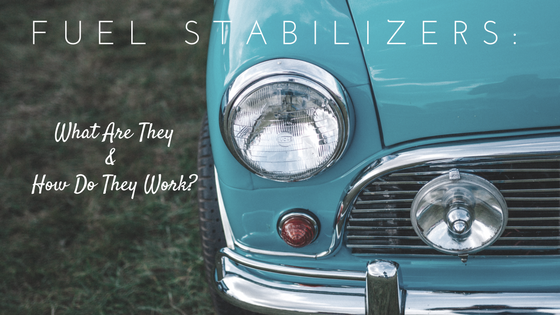Fuel is a dynamic liquid, and when you leave it to sit around, it can go bad. According to RoadandTrack.com, fuel starts to spoil after just 30 days, unless it’s stored in an entirely airtight container.
Unfortunately, a car’s fuel system isn’t airtight. As such, owners must preserve fuel in out-of-use vehicles. This is where fuel stabilizers come in. Designed to prevent oxidation in fuel, stabilizers extend the lifespan of fuel.
What is Fuel Stabilizer?
Fuel stabilizer, such as Berryman Total Fuel Stabilizer, is a solution that provides a protective layer for the fuel sitting in a gas tank. Typically made from petroleum products, fuel stabilizer bonds with gasoline to prevent evaporation. In doing so, it also prevents fuel from forming sticky resins that can quickly ruin a carburetor.
On a chemical level, stabilizer is just a mixture of antioxidants and lubricants designed to repel water and limit evaporation.
When to Use Fuel Stabilizer
For everyday life, fuel stabilizers aren’t necessary. When a vehicle is driven or used, the gasoline burns up before it begins to evaporate and degrade.
For people who own seasonal equipment, classic cars, or boats that tend to sit for more than three weeks at a time, however, fuel stabilizer is a fantastic idea. This is particularly the case for anyone working with equipment that has an older engine.
While the lifespan of fuel stabilizer varies depending on brand, most mixtures will preserve fuel for a full year. If you increase the dosage, you may even get longer protection from the concoction.
How to Use Fuel Stabilizer
Using fuel stabilizer isn’t as simple as pouring a capful into the gas tank. Instead, you need to follow these three steps for maximum protection:
-
Add measured stabilizer to tank.
The first step in using a stabilizer is to read the product instructions on the brand of stabilizer you’ve purchased. Make sure your vehicle has a nearly empty tank of gas. Once you’ve done this, measure the correct amount of stabilizer and pour it into the gas tank.
-
Fill your tank with fuel.
This disperses the fuel stabilizer with gasoline and ensures that your tank is minimally exposed to air or water. For best results, opt for an ethanol-free type of gas.
-
Run the vehicle.
Next, you’ll need to run the engine to allow the fuel stabilizer to reach the entire fuel system. Typically, 5-10 minutes of active run time is more than enough to do this.
Fuel Stabilizer: The Working Person’s Best Friend
Whether you have fuel tanks sitting in the shed for your lawnmower or weed whacker, or a classic car waiting for the warmer days of summer to roll around once more, fuel stabilizers are a fantastic way to preserve the fuel in your tanks and keep all of your various motors running smoothly.
Looking for a fuel stabilizer that works well for your vehicles? Berryman Products has just the one you need! Compatible with all 2-stroke and 4-stroke engines, Berryman Total Fuel Stabilizer allows long-term storage of all grades of gasoline and diesel fuel. It contains high-performance corrosion inhibitors, metal deactivators, and antioxidants to prevent rust and oxidation. It prevents the formation of gum and varnish and assures easy start-up after extended storage.

